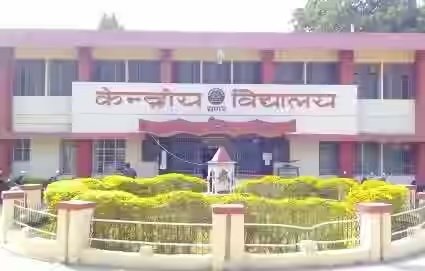Expansion will cover 17 states and union territories, create over 4,600 jobs, and provide quality education to nearly 87,000 students.
NEW DELHI (India CSR): In a landmark decision aimed at strengthening the country’s school education network, the Cabinet Committee on Economic Affairs (CCEA), chaired by Prime Minister Narendra Modi, has approved the opening of 57 new Kendriya Vidyalayas (KVs) under the civil sector. The project will involve an estimated expenditure of over Rs 5,862 crore spread across nine years, beginning in 2026-27. With this move, the government seeks to cater to the growing demand for quality education among children of Central Government employees, while also advancing inclusivity in underserved and aspirational districts.
Financial Outlay and Infrastructure
The total sanctioned cost of Rs 5,862.55 crore will include a capital expenditure of about Rs 2,585 crore and an operational expenditure of nearly Rs 3,277 crore. The funds will be utilized to construct modern school infrastructure, recruit teachers and staff, and ensure smooth operations of the newly sanctioned schools. Each Kendriya Vidyalaya will be designed to accommodate approximately 1,520 students, ensuring standardized facilities across the country.
Integration of NEP 2020 and Balvatika Model
For the first time, these schools will be sanctioned with Balvatikas, introducing three years of foundational stage education (pre-primary) in line with the National Education Policy (NEP) 2020. This initiative is expected to set the tone for a new era of early childhood education in Kendriya Vidyalayas, integrating foundational learning into the mainstream schooling system.
Key Facts Table: Cabinet Approval of 57 New Kendriya Vidyalayas
| Particulars | Details |
|---|---|
| Number of New KVs Approved | 57 Kendriya Vidyalayas |
| Total Project Outlay | Rs 5,862.55 crore (over 9 years, from 2026-27) |
| Capital Expenditure | Rs 2,585.52 crore (approx.) |
| Operational Expenditure | Rs 3,277.03 crore (approx.) |
| States/UTs Covered | 17 |
| Students Benefiting | ~86,640 students (1,520 per KV) |
| Direct Permanent Jobs Created | ~4,617 (81 per KV) |
| Additional Job Opportunities | Thousands via construction & allied works |
| Special Focus Areas | 20 in districts with no KV, 14 in aspirational districts, 4 in LWE areas, 5 in NER/hilly regions |
| Integration with NEP 2020 | Balvatika (3 years of pre-primary) introduced for the first time |
| Current KVs in India (as of June 2025) | 1,288 (including 3 abroad – Moscow, Kathmandu, Tehran) |
| Total Enrolment in Existing KVs | ~13.62 lakh students |
| PM Shri Schools | 913 KVs already designated as PM Shri schools |
Pan-India Expansion Strategy
The proposal aims to ensure geographical balance and equity in access to quality education. Out of the 57 new schools:
- 20 KVs will be opened in districts that currently have no Kendriya Vidyalaya.
- 14 KVs will be set up in aspirational districts.
- 4 KVs will be located in Left-Wing Extremism (LWE)-affected districts.
- 5 KVs are planned for North Eastern and hilly areas.
This expansion builds on the earlier sanction of 85 Kendriya Vidyalayas in December 2024, ensuring coverage of states and regions that had not been prioritized since March 2019. In total, 17 states and UTs are included in this new approval.
Employment and Economic Opportunities
The establishment of these schools will not only benefit students but also generate significant employment opportunities. Each KV employs around 81 staff members, which means that with 57 new schools, 4,617 direct permanent jobs will be created. Additionally, the construction phase and associated activities are expected to generate thousands of indirect jobs for both skilled and unskilled workers, boosting local economies.
Strengthening the KVS Network
As of June 2025, there are 1,288 Kendriya Vidyalayas in operation, including three international branches in Moscow, Kathmandu, and Tehran, catering to a student strength of approximately 13.62 lakh. With the addition of these 57 schools, nearly 86,640 more students will gain access to high-quality education under the Kendriya Vidyalaya Sangathan (KVS).
The KVs are already regarded as some of the most sought-after institutions in the country, known for their consistent performance in CBSE board examinations, innovative pedagogy, and modern facilities. The new schools will strengthen this reputation and widen access to government-backed, affordable education.
Model Schools for the Future
The government’s emphasis on integrating NEP 2020 and aligning KVs with PM Shri Schools demonstrates a vision to make Kendriya Vidyalayas model institutions of the future. Currently, 913 KVs have already been designated as PM Shri Schools, leading educational reform by adopting modern teaching methods and digital infrastructure.
The expansion signals a robust effort to ensure that quality education reaches underserved districts, border areas, and aspirational regions, while meeting the growing demand in urban and semi-urban localities with a high concentration of Central Government employees.
You Learn
The Cabinet’s approval of 57 new Kendriya Vidyalayas marks a major milestone in India’s education landscape. By expanding access to nearly 87,000 additional students, creating over 4,600 jobs, and integrating the foundational learning model of Balvatikas, the government has reaffirmed its commitment to building a strong and inclusive school education system. This expansion will not only bridge regional gaps in educational infrastructure but also serve as a critical step in realizing the objectives of NEP 2020 and advancing India’s vision of “education for all, quality for all.”
(India CSR)




















